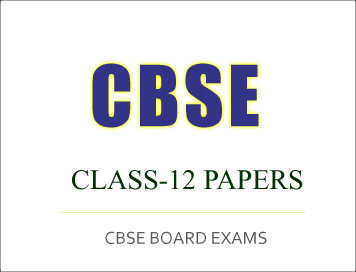CBSE Class-12 Exam 2017 : All India Scheme Question Paper, Fabric Study
Disclaimer: This website is NOT associated with CBSE, for official website of CBSE visit - www.cbse.gov.in
CBSE Class-12 Exam 2017 : All India Scheme
Fabric Study
Fabric Study
कपडा अध्ययन
FABRIC STUDY
सामान्य निर्देश :
(i) सभी खण्डों के उत्तर दीजिए ।
(ii) जहाँ सम्भव है, अपने उत्तरों को चित्रित कीजिए ।
General Instructions :
(i) Attempt all sections.
(ii) Illustrate your answers wherever possible.
खण्ड अ
SECTION A
सत्य है या असत्य, बताइए । सभी प्रश्न कीजिए ।
State true or false. Attempt all questions.
१. कपडे में ताने की दिशा में सबसे अधिक लचक होती है । १
In a fabric, the maximum stretch is in the direction of the warp.
२. कढाई के टाँकों को बखिया टाँके (बैक स्टिच) से आरम्भ किया जाता है । १
Embroidery stitches are started with a back stitch.
४. तैपची, फन्दा और जाली चिकनकारी में प्रयोग की जाती है । १
Taipchi, Phanda and Jali are used in Chikankari.
५. बंगाल की फोक् (लोक) कला चिथ‹डों की कला की तरह निर्देशित की जाती है । १
The folk art of Bengal is referred to as the art of rags.
खण्ड ब
SECTION B
बहुत संक्षिप्त उत्तर दीजिए ।
Write very short answers.
६. तन्तुओं का उनकी लम्बाई के आधार पर वर्गीकरण कीजिए । २
Classify fibres on the basis of their length.
७. डौबी बुनाई की दो महत्त्वपूर्ण विशेषताएँ बताइए । २
Give two important characteristics of Dobby weave.
८. निटिड कप‹डों के दो व्यापक वर्ग बताइए । २
Give two broad categories of knitted fabrics.
९. फैल्ट और फ्लैनल में अन्तर बताइए । २
Give the difference between felt and flannel.
१०. निम्नलिखित पारंपरिक वस्त्र भारत के किन राज्यों के हैं ? २
(i) पटोला
(ii) फुलकारी
(iii) कान्था
(iv) बान्धनी
अथवा
To which Indian States do the following traditional textiles belong ?
(i) Patola
(ii) Phulkari
(iii) Kantha
(iv) Bandhni
